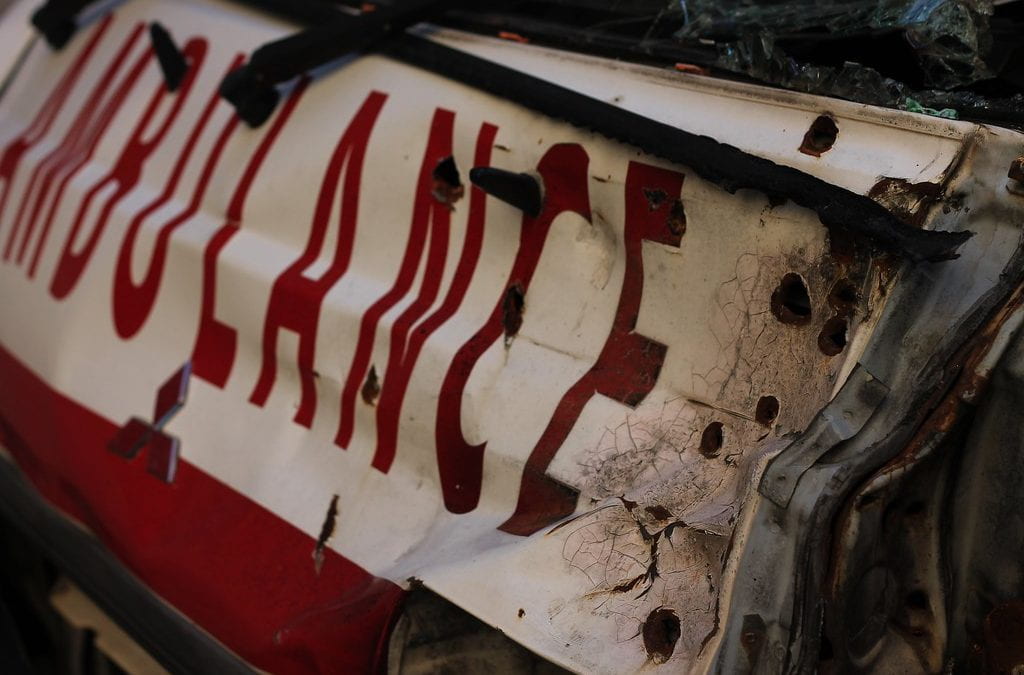Introduction
In March 2022, María Hernández, Yohannes Haleform, and Tedros Gebremariam began their daily task of searching for casualties to assist in the war-torn region of Tigray in northern Ethiopia. The next day, they were found dead. A part of Médecins Sans Frontières, these three were some of the many brave humanitarian aid workers who have dedicated their lives to assisting those forcefully displaced from their homes because of violent conflicts and natural disasters. These aid workers face many atrocities during the course of their work, and all too often, they are the targets of attacks. The rising level of violence targeting humanitarian aid workers, particularly in the ongoing conflict in the Tigray region of Ethiopia, highlights the concerning deficiency of effective legal protections for humanitarian aid workers worldwide. In order to permit these workers to safely and successfully perform their critical work of providing medical care, food, and other life saving resources to victims of conflict, legal protection mechanisms must be strengthened.
Current Legal Framework of Protections for Aid Workers
The primary international legal structure for humanitarian protection is embodied in International Humanitarian Law (IHL) and is codified in the Four Geneva Conventions of 1949 as well as the Additional Protocols of 1977 and 2005. These instruments outline the responsibilities ratifying countries have to protect noncombatants during violent conflict, and are supplemented by various treaties and customary norms. Specifically, Additional Protocol I outlines the obligation to respect and protect humanitarian workers. In addition, according to the Rome Statute Article 8(2)(b)(iii), “[i]ntentionally directing attacks against personnel, installations, material, units or vehicles involved in a humanitarian assistance or peacekeeping mission in accordance with the Charter of the United Nations” is a war crime.
This legal structure, though broad, is fragmented. Because these legal protections emanate from multiple sources, both national and international in nature, there is often confusion about both their character and scope of coverage. The International Committee of the Red Cross has highlighted the concern that “the personnel of humanitarian organizations are protected in an unequal manner and that the rules intended to guarantee their security are very widely scattered, thus leading to a lack of clarity about the exact scope of such protection.” This fragmentation is further exacerbated by the fact that ultimately, humanitarian aid is subject to the consent of the state, and there are no explicit coercive measures in the case of state refusal. Coupled with the perception that IHL is irrelevant, these issues lead to a lack of compliance and ineffective enforcement of laws of humanitarian protection, as evidenced by an increasing number of deaths of humanitarian aid workers. In an area of critical importance, this lack of compliance should be universally repudiated.
Failed Legal Protections of Humanitarian Aid Workers in Ethiopia
Ethiopia was the world’s deadliest country for aid workers in 2021, with at least 19 aid workers being killed in the course of the year. The violent conflict in the country has raged for decades, with its origins stemming from the establishment of the Tigray People’s Liberation Front (TPLF) in 1975. In November 2020, the Ethiopian Prime Minister Abiy Ahmed began a violent campaign against the TPLF. Devastation ensued, with the United Nations Office of the High Commissioner reporting the existence of “extrajudicial killings, torture, pillaging, sexual and gender-based violence, and the forcible displacement of civilians.” As the conflict continues, and nine in ten people in the region require humanitarian assistance, the need for aid workers is absolutely essential. After the deaths of Halefom, Hernández, and Gebremariam–the three aid workers killed in March–MSF made a difficult decision to suspend their activities in the regions of Abi Adi, Adigrat, and Axum. Although the suspension was lifted, without MSF’s assistance, locals were without critical food and medical attention for three long months.
Conclusion
In 2022, it was estimated that over 274 million people would require humanitarian aid. As the world continues to bear witness to more frequent natural disasters, wars, and other violent conflicts, the need for aid workers has only grown. In order to permit the safe and effective deployment of aid workers to render assistance worldwide, the international legal protection mechanisms for aid workers must be fortified so that more workers do not have to meet the same undeserved fate as Halefom, Hernández, and Gebremariam.
Author Biography: Sarah Burns is a Moderator of the International Law Society’s International Law and Policy Brief (ILPB) and a J.D. candidate at The George Washington University Law School. She has a bachelor’s degree in International Studies and Spanish from the University of Miami. Prior to attending law school, Sarah worked for the Global Partnership for Sustainable Development Data at the United Nations Foundation.Tweet

